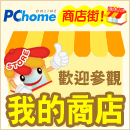Printing Technology
Traditional screen printing is limited by color separation technology and machine equipment, so the printed patterns are mainly in color block structure and simple gradation.

Due to the limitation of the length of the printing machine equipment, currently only 15 colors (plates) can be printed in Taiwan at most, and the general factory has about 11 or 12 colors (plates). When the design drawing contains more than 15 colors, it will respond by combining colors or reducing colors, or switching to digital printing.
Compared with traditional screen printing, digital printing has no color restrictions, and is suitable for rich colors or multi-color complex gradient patterns.

In terms of production cost, although digital printing does not have the cost of plate making, there will be other costs such as drawing, color proofing, fabric handling, etc. The unit cost of printing per yard is much higher than traditional screen printing.
The "MagiPrint®" color separation system developed by Ample Ace. combines the characteristics of traditional screen printing and digital printing, so that traditional screen printing no longer has the limitation of color and gradient color.
Traditional screen printing requires one spot color plate for each color to be printed, such as the eight colors in the design shown below, which requires eight plates to be made for printing. The traditional screen printing technology used in digital printing and the MagiPrint® system is based on the printing mixing principle, so there are no color limitations.
- Color separation method of traditional screen printing technology

- Digital printing and color separation method of "MagiPrint®" system

"Another advantage of the MagiPrint® system is the "combined printing". For example, in the tablet sleeve shown below, 21 designs are printed at the same time, and the product inventory is only 1 in 21 for the same number of print runs.More importantly, the printing cost is the same as traditional screen printing.



